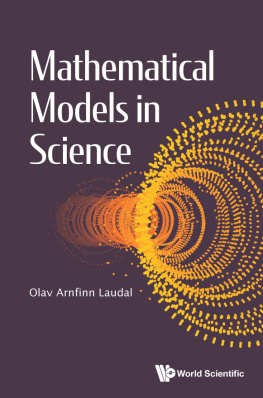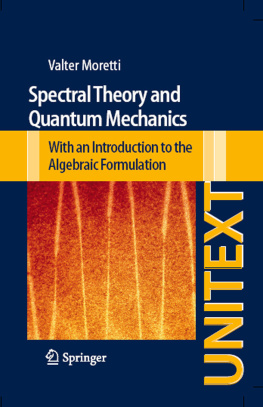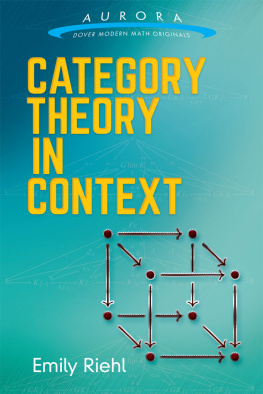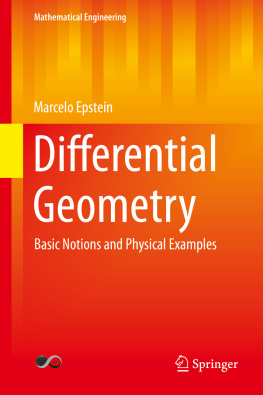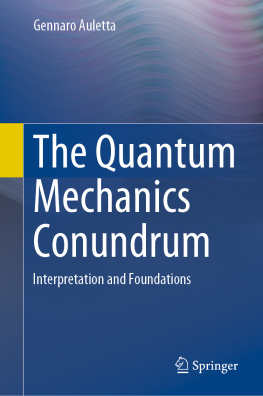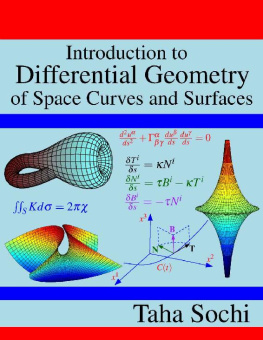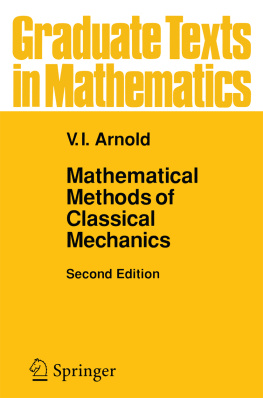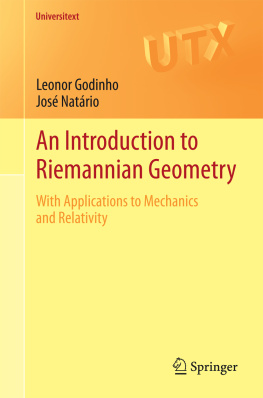Differential Sheaves and Connections
A Natural Approach to Physical Geometry
SERIES ON CONCRETE AND APPLICABLE MATHEMATICS
ISSN: 1793-1142
| Series Editor: | Professor George A. Anastassiou
Department of Mathematical Sciences
University of Memphis
Memphis, TN 38152, USA |
Published
| Vol. 8 | Approximation by Complex Bernstein and Convolution Type Operators
by Sorin G. Gal |
| Vol. 9 | Distribution Theory and Applications
by Abdellah El Kinani & Mohamed Oudadess |
| Vol. 10 | Theory and Examples of Ordinary Differential Equations
by Chin-Yuan Lin |
| Vol. 11 | Advanced Inequalities
by George A. Anastassiou |
| Vol. 12 | Markov Processes, Feller Semigroups and Evolution Equations
by Jan A. van Casteren |
| Vol. 13 | Problems in Probability, Second Edition
by T. M. Mills |
| Vol. 14 | Evolution Equations with a Complex Spatial Variable
by Ciprian G. Gal, Sorin G. Gal & Jerome A. Goldstein |
| Vol. 15 | An Exponential Function Approach to Parabolic Equations
by Chin-Yuan Lin |
| Vol. 16 | Frontiers in Approximation Theory
by George A. Anastassiou |
| Vol. 17 | Frontiers in Time Scales and Inequalities
by George A. Anastassiou |
| Vol. 18 | Differential Sheaves and Connections: A Natural Approach to Physical Geometry
by Anastasios Mallios & Elias Zafiris |
To view the complete list of the published volumes in the series, please visit:
http://www.worldscientific/series/scaam |
Series on Concrete and Applicable Mathematics Vol.18
Differential Sheaves and Connections
A Natural Approach to Physical Geometry
Anastasios Mallios
Elias Zafiris
National and Kapodistrian University of Athens, Greece

Published by
World Scientific Publishing Co. Pte. Ltd.
5 Toh Tuck Link, Singapore 596224
USA office: 27 Warren Street, Suite 401-402, Hackensack, NJ 07601
UK office: 57 Shelton Street, Covent Garden, London WC2H 9HE
British Library Cataloguing-in-Publication Data
A catalogue record for this book is available from the British Library.
DIFFERENTIAL SHEAVES AND CONNECTIONS
A Natural Approach to Physical Geometry
Copyright 2016 by World Scientific Publishing Co. Pte. Ltd.
All rights reserved. This book, or parts thereof, may not be reproduced in any form or by any means, electronic or mechanical, including photocopying, recording or any information storage and retrieval system now known or to be invented, without written permission from the publisher.
For photocopying of material in this volume, please pay a copying fee through the Copyright Clearance Center, Inc., 222 Rosewood Drive, Danvers, MA 01923, USA. In this case permission to photocopy is not required from the publisher.
ISBN 978-981-4719-46-9
In-house Editors: V. Vishnu Mohan/Kwong Lai Fun
Typeset by Stallion Press
Email:
Printed in Singapore

Preface
The central nucleus of this treatise targets a perennial issue of Modern Mathematical Physics, or even better, and in alignment with the spirit of this work, of its inversion into Physical Mathematics, namely the issue of thinking about and modeling or describing Physical Geometry. The notion of a physical geometry is considered always as the outcome of physical laws pertaining to the regime of a physical theory. The basic question emerging in this context is the following: Does there exist a natural description of physical geometry? By natural we mean a description, which is not based on ad hoc conventions involving a God-given geometric coordinate substratum of any local or global form, but it refers to the pertinent physical relations themselves together with their empirical realization in terms of observed events. Of course, the required naturality in the description of a physical geometry should be initially reflected in the way that we set up a sufficient network of concepts and modeling tools in order to capture these relations and become able to distinguish them and eventually to make predictions.
Several issues of an interpretational nature arise together with the requirement of naturality, which force a critical re-examination of the conceptual choices and assumptions initially endorsed from a physical viewpoint. The two most significant ones in relation to a natural approach to physical geometry are the concepts of locality and differentiability. In the opening section of the Prolegomena to the general theory that follows, I will attempt to analyze briefly the related problems, so as to motivate conceptually the focus of the whole treatise and prepare the ground for the proposed resolution provided by the notions of differential sheaves and connections. Technically speaking, the present work constitutes a confluence of the ideas and methods emanating from two sources: The first source is the theory of Abstract (alias Modern) Differential Geometry (ADG), developed by Mallios, using the notions of vector sheaves, connections and sheaf cohomology, and applied in the formulation and interpretation of gauge theories and general relativity, aiming at a background independent understanding of these physical theories. The second source is the theory of topoi, developed by Grothendieck, as generalized localization environments for needs in algebraic geometry and homological algebra going beyond the classical theory of topological spaces. Recently, it has been demonstrated that the theory of Grothendieck topoi offers a precise framework to understand the notion of localization in quantum theories, so it bears a physical significance as well, together with the rich mathematical innovations involved in these developments. These two sources generate a conjoined stream of new concepts and technical tools for a natural approach to physical geometry. The unifying thread is provided by the ubiquitous notion of adjoint functors in category theory, which characterizes the naturality of the purported approach to physical geometry in functorial terms. This is enough to legitimize the title of this work for the time being.
I turn now promptly to the history of the treatise itself, which has been unfortunately non-smooth and disrupted. The treatise has been in the process of scrupulous preparation by Anastasios Mallios as a sole author during the last five years. Sadly, he passed away at the age of 81 years old, when the manuscript has been in the very last stages of its completion. Immediately after being informed about this sad event, George Anastassiou of the University of Memphis, took the initiative to make possible the publication of Mallioss last work and kindly sent an invitation for a final completed version of the initial manuscript to appear in his World Scientific series. So I would like to thank him wholeheartedly for his immediate involvement in preserving Mallioss last writing, his invitation for publication of this work in the context of his series, and for the overall support and encouragement during the final stage of completion of this project.
Next, I feel that I should justify my appearance as a co-author of this book in the present published form. I have been a very close collaborator of Mallios during the last 10 years in the application of ADG in problems of theoretical physics, especially in relation to quantum mechanics and quantum gravity. It was during one of our long regular work meetings in Athens nine years ago that, while talking about a possible topos-theoretic extension of the framework of ADG, I formulated quite clearly the idea that the notion of adjoint functors, and in particular the Hom-Tensor adjunction, should play the role of a connecting bridge between ADG and topos theory. My motivation came from quantum mechanics and more precisely from my previous work on quantum logic, quantum probability, and the problem of quantum measurement, where a topos-theoretic notion of localization in relation to physical representability or observability is precisely rooted on a pair of adjoint functors of the Hom-Tensor universal form. I recall that after making the argument, Mallios was quite critical and hesitant to accept it in the first place. After all, is there any physical meaning underlying such an abstract concept from category theory? We finished that meeting by making the following agreement: I had to write down my argument and provide concrete physical examples, whereas he would think of the suitability of this notion in relation to ADG. Two weeks later we met again at the same place. The first words he told me in his usual humorous style were
Next page

